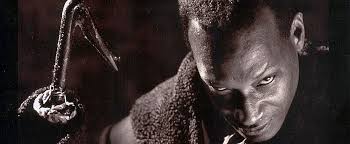Why tales of cooked babies and ax murderers still stop us cold.

The most popular books in my elementary-school library, much to the dismay of our librarian, were Scary Stories to Tell in the Dark and Southern Fried Rat and Other Gruesome Tales. While Ms. Polachek was trying to promote the wonders of Jane Eyre or Huck Finn, we hovered around a table squealing about rodent parts in fast-food chicken nuggets and headless women rolling around in graves.
Much later in life, I remember sitting in a crowded Chili's during my break as a food server, getting goosebumps as I listened to the bartender talk about this new documentary called “Blair Witch,” where the filmmakers disappeared in the middle of making it. And to this day, no matter what amount of money you offer, you'll never get me to look in the mirror and say "Candy Man" three times.
In some ways, the urban legend is storytelling in its finest form: short, with a few select details to make you believe, and a narrative arc that builds in tension and then explodes.
My friends and I always told urban legends to spook each other out. The best ones were those to which we could relate — the babysitter alone at night getting strange phone calls, a graveyard dare that ends in a heart attack, a woman leaving the mall only to find a man disguised as an old woman sitting in the back seat of her car.
One of my favorite urban legends, which casts an even more sinister tone now that I'm a parent, is the story in which a young couple leaves their baby with a new babysitter for the evening. The babysitter, unbeknownst to the trusting couple, gets high as a kite on some kind of hallucinatory drugs, and when the parents come home after their date night, they smell something burning and don't see their beloved baby anywhere. The babysitter tells them, "I've cooked the turkey for you."
I love urban legends because even if you know they aren't true, they still poke you in the places that make you squirm. Of course, these tales are not all about grossing people out or scaring them silly.
"Legends are often reflective of deeper meanings behind the deceptively simple reasons people claim to tell them," says Debra Lattanzi Shutika, a folklorist at George Mason University. She points to all oral narrative — folk tales, fairytales, jokes, myths, riddles, and ghost stories — as cultural commentary. My drugged-out babysitter is a great example: Here is a not-so-subtle reminder about the vulnerability of leaving your precious infant in the hands of a virtual stranger.
"Why did people tell stories about a 'hook man' terrorizing young couples parking at lover's lane?” Shutika says. “It was an unspoken warning about the dangers of being alone in an isolated area with a man. The real threat, however, wasn't outside the car."
There's a sense of humor behind many of these stories, too. Remember the rumor that green M&Ms would make you good in bed? Or the tale of the person who sat down on a newly varnished toilet and got stuck? And how many of you got caught posting that silly privacy statement on your Facebook status recently?
Regardless of scary or funny, urban legends are best when told aloud. Alvin Schwartz captures this in the introduction to Scary Stories when he says, "Speak softly so that your listeners lean forward to catch your words, and speak slowly, so that your voice sounds scary." In the first chapter of the book, the "jump" stories, Schwartz offers up bracketed instructions to enhance your storytelling abilities: "As you shout the last words, stamp your foot and lunge at someone nearby."
The way all good stories do, legends stick with you long after you've heard or read them. They dance behind your eyeballs as you're trying to fall asleep. They nag at you while you're driving that dark back road in the middle of the night.
But are urban legends as fun today when Google is just a click away? If your BFF swears her cousin's neighbors were filmed having sex when they checked into a sleazy hotel, isn't it anticlimactic to be able to search on Snopes.com and prove her wrong? Shutika says no.
"For years, people have said that modern life — telephones, computers, email, cellphones, texting — would destroy folklore. But we've found that with each technical innovation, folklore flourishes."
So this weekend, when you’re unwrapping that trick-or-treat candy to check for razorblades, take some time to tell your favorite urban legend to a friend. And make sure you lean in close and scream so they feel it to the bone. It's what the season is for.
Tara Laskowski's birthday is on Halloween, and she accepts cash or gifts. She is the editor for the “urban legendary” SmokeLong Quarterly flash-fiction magazine and has a story collection, Bystanders, forthcoming May 2016 from Santa Fe Writers Project.

